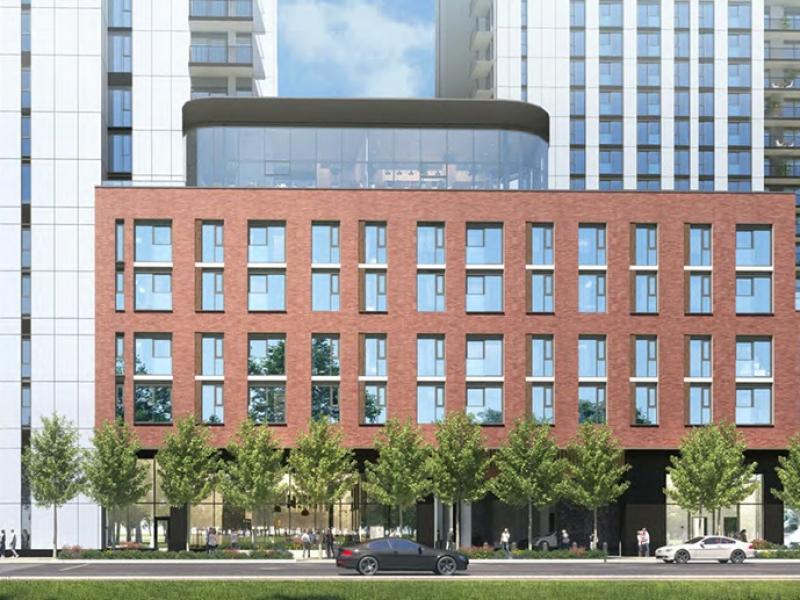Commercial property tax rates were at least double those of residential rates in eight of the 10 Canadian cities surveyed in the new Altus Group Canadian Property Tax Rate Benchmark Report 2017.
The average commercial-to-residential property tax ratio for the 10 cities in the report produced in partnership with the Real Property Association of Canada (REALPAC) was 2.85. Halifax, Calgary and Ottawa sit just below the average with respective ratios of 2.77, 2.73 and 2.67. Edmonton has a 2.44 ratio while Winnipeg’s is 2.01.
Saskatoon and Regina have the lowest ratios at 1.72 and 1.75 respectively. They’re the only cities surveyed with commercial tax rates less than twice the residential rate.
Vancouver has the highest ratio at 4.87.
“Vancouver had the highest commercial-to-residential ratio in 2016 of 4.38 and, with the booming real estate economy out there, they would have had an opportunity to reduce that ratio,” said Terry Bishop, president of Property Tax Canada at Altus Group.
“But they actually increased it 11.23 per cent to 4.87, so not only is it the highest ratio of all 10 cities we surveyed, it had the largest increase in ratios from 2016 to 2017 as well.
“It’s the only city with a ratio above four. That was kind of a surprise and I think maybe it was a bit of a missed opportunity there.”
Toronto’s commercial-to-residential tax ratio declined for a 13th straight year, with a minor decrease to 3.81. Commercial rates will need to decrease at a faster rate if the City is to achieve its target ratio of 2.5 by 2023.
Montreal continues to have the highest commercial property tax rate in Canada at $37.23, almost three times as high as Vancouver. However, it stopped a 10-year upward trend by decreasing its commercial-to-residential ratio to 3.77.
An ideal property tax system?
“In an ideal property tax system, the ratio would be one-to-one for everybody,” said Bishop.
“Anything higher than that is clearly unfair. So I guess the more important question is ‘How unfair is fair enough?’ ”
Lower commercial property taxes can help make cities more competitive, promote job growth and investment, and subsequently generate more stable and sustainable revenue.
Property taxes are next to net rent in terms of occupancy costs and can be a significant factor when companies are deciding where to open an office or industrial building.
“We’re always getting companies coming to us and asking for estimates of what taxes will be if they locate in city A or city B,” said Bishop, who added it’s difficult to make blanket forecasts for future property tax rates.
The challenge of tax rates tied to property value
“Municipalities are always in need of more money to fund services and infrastructure upgrades and things like that,” said Bishop. “That would point to higher rates in the future, but it really depends on how much property values continue to rise.
“If property values continue to go up at a higher rate than municipal requirements, then tax rates should be coming down. But that again is dependent on tax policy decisions.
“If we were to see a downturn in the real estate market, that could compound things and make rates even higher.”
This is the 14th year of the report and its findings are used by Altus Group and REALPAC to create dialogue with taxing authorities about tax fairness, as well as to influence public policy and promote a healthy business environment for the real estate sector.
REALPAC is a national association dedicated to advancing the long-term vitality of Canada’s real property sector.
Ontario renters pay higher tax rates, Toronto the highest
The report also compares residential property tax rates to multi-residential property tax rates. The findings indicate Ontario renters are carrying a disproportionate burden of property tax. While renters are being taxed equally to homeowners in most of Canada, with an average ratio of one-to-one, Ontario apartment buildings built before 1998 carry significantly higher ratios.
Bishop attributes it to an historical inequity as a result of the assessment freeze that was in place before market value assessments were introduced in Ontario in 1998.
“Multi-residential properties were assessed on a higher percentage of actual market value than were residential properties. Back then we had an inequity in assessment and, when they brought in market value assessment in 1998, all they did was shift that inequity in assessment on to the inequity in tax rates when they created the multi-residential tax rate.”
Ottawa’s multi-residential-to-residential ratio is 1.38 while Toronto leads the pack at 2.21. These higher taxation levels on older multi-residential buildings can pose a potential challenge for landlords looking to direct funds to needed repairs, maintenance and building infrastructure upgrades.
“If you look at Toronto, there are a number of buildings that have fallen into disrepair,” said Bishop. “The high level of taxation certainly has to be a contributing factor to that.”








